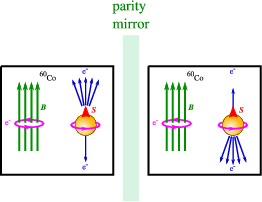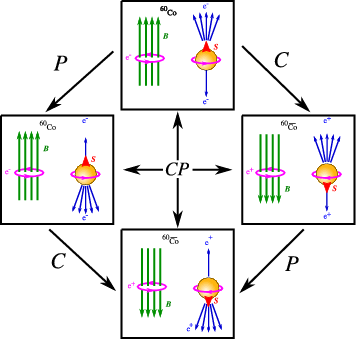7.6: CP Violation
( \newcommand{\kernel}{\mathrm{null}\,}\)
The first experimental confirmation of symmetry breaking was found when studying the β− decay of 60Co,
60Co→60Ni+e−+ˉνe.
This nucleus has a ground state with non-zero spin, which can be oriented in a magnetic field.
A magnetic field is a pseudo-vector, which means that under parity it goes over into itself →B→→B. So does the spin of the nucleus, and we thus have established that under parity the situation under which the nucleus emits electrons should be invariant. But the direction in which they are emitted changes! Thus any asymmetry between the emission of electrons parallel and anti-parallel to the field implies parity breaking, as sketched in figure [fig:parity].

Parity breaking for the β decay of 60Co
Actually one can shown that to high accuracy that the product of C and P is conserved, as can be seen in figure [fig:CP].

CP symmetry for the β decay of 60Co


